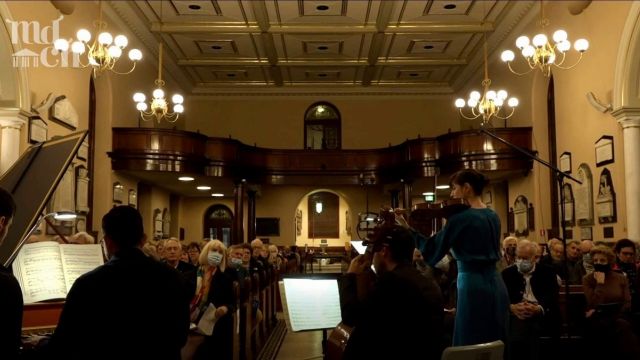The Obbligato Sonatas
How fitting to bring together work composed by Johann Sebastian Bach in the 1720s and Francis Greenway’s stately St James Church King Street, consecrated one hundred years later. In that revered building – the oldest existing in inner Sydney – Bach’s much-loved Obbligato Sonatas thrilled a large and appreciative audience.
The Bach Akademie Australia led by internationally acclaimed Australian violinist Madeleine Easton, with Neal Peres Da Costa at the Harpsicord and Anton Baba playing the Viola da gamba and Cello, graced the Sydney landmark with a stunning performance of five of these famous sonatas.
In her program notes, Easton describes them as “a true master-class in tri-part contrapuntal writing”. Each sonata, she explains, “displays a different personality, colour and mood with its own unique harmonic characteristics” that take the listener “through every conceivable mood and emotion from extreme joy to contemplative emotion”.
Easton’s description only hints at the range of emotions evoked in this beautifully executed performance of Bach’s remarkable compositions. All three musicians are masters of their instruments. In their hands the varying rhythms and textures specific to each instrument came together in performance that only musicians so completely in harmony with each other can achieve.

With the gold mosaic tiles of the semi-dome shining above them, they captured the real lyricism of Bach’s motivic work in a performance that brought warmth and hope from Bach’s eighteenth-century world to a cold, virus-threatened winter night in 2021.
Each instrument shines in these sonatas, the mellow cello and historic viola da gamba, the distinctive baroque registers of the harpsicord, and the elegant, clear voice of Easton’s 1682 Giovanni Grancino violin combine to emphasise the enduring passion of these compositions.
Together they evoke the patient calm of the sonata in B minor, the happiness and bright repetitive motifs of the sonata in A major; the “noisy sharp joy” difficulty of the sonata in E major; the range of emotions in the fifth sonata in F minor – the mournful melancholy of the Largo to the lighter, more hopeful motifs of the Vivace.
The concert concludes with the “rustic, idyllic” sixth sonata in G major. Here Bach inserted a solo Allegro for the harpsicord. This short, sweet solo piece gives Peres Da Costa the opportunity to highlight the versatility of the harpsicord – before the light, airy, celebratory moments of the final Adagio and Allegro.

The flourish of those finishing notes reflects the concentrated musicianship of these three fine performers – and their deep, intuitive empathy with the texture and emotion of music composed by Bach nearly three hundred years ago.
This performance was recorded – and may be available for streaming.
Carol Wimmer
Subscribe to our E-Newsletter, buy our latest print edition or find a Performing Arts book at Book Nook.

